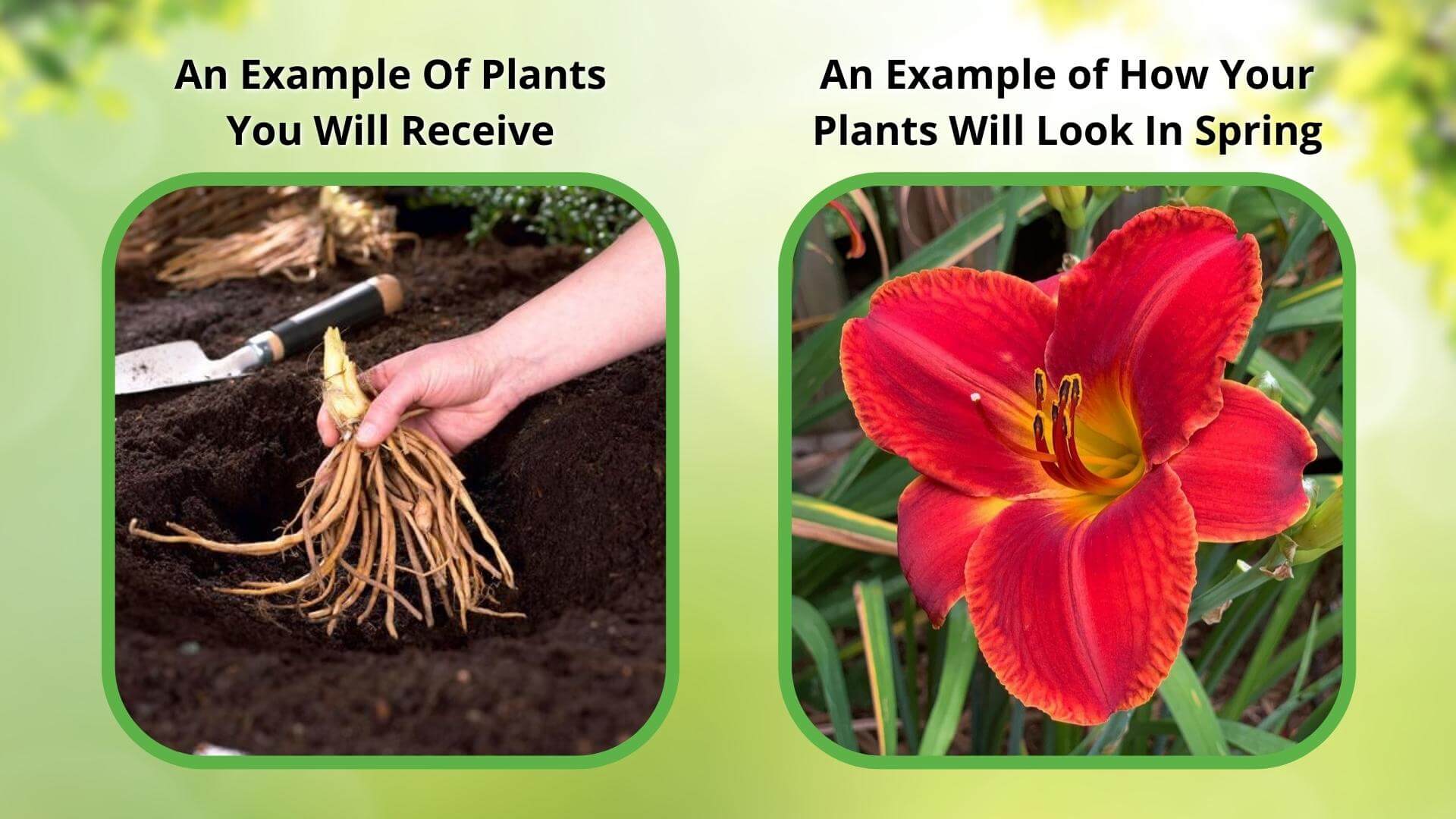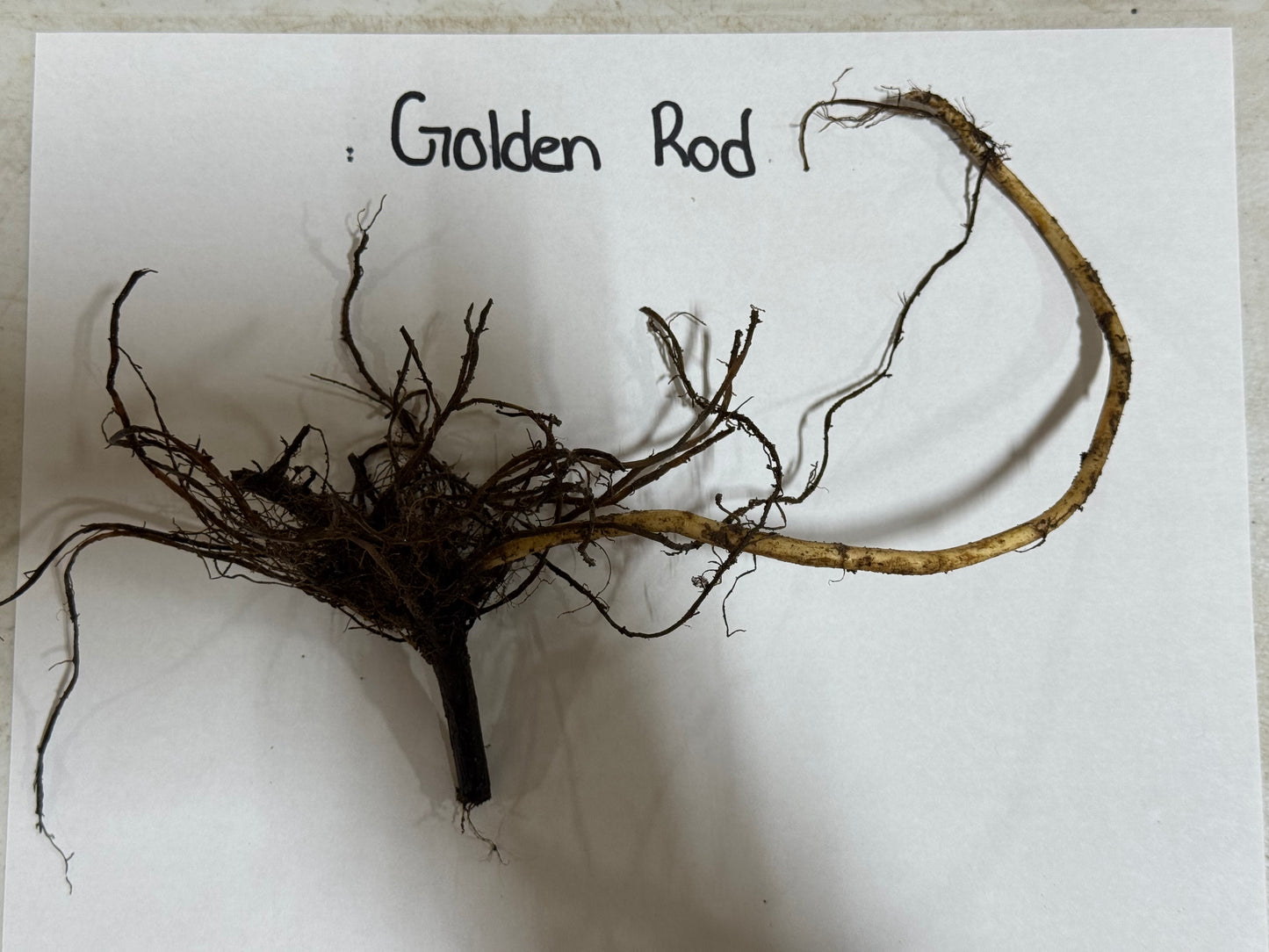Couldn't load pickup availability
🌸When you add 1 plant to cart, it automatically adds the free one
Golden Rod Flower Plant – Solidago Overview
Golden Rod (Solidago) is a genus of herbaceous perennial plants, many of which are native to North and South America. These impressive plants, reaching heights of up to 6 ft, have long stems that form clumps of foliage and spread quickly through their shallow rhizomatous root system. They are robustly vigorous plants commonly found along road sides in the USA.
Depending on the species, flowers emerge in plume-like panicles or wand-like racemes. In either case, the flowers hug the stem closely, forming a dense cluster of yellow flowers. Together, these flowers create a barrage of brilliant yellow stalks standing tall atop green and rigid stems. They bloom from mid to late summer through the autumn months and then become dormant after the first frost.
Golden Rod Plant Details | Solidago Genus
Family: Asteraceae
Hardiness Zones: 3 to 9
Light Requirement: Full sun to partial shade
Water Needs: Low to moderate
Height: 1 to 6 ft
Spread: 1 ft
Growth Rate: Moderate to fast
Bloom Time: Late summer to early fall
Flower Color: Bright yellow
Wildlife Value: Highly attractive to pollinators and food source for birds
The flowers of this impressive perennial are incredibly enticing for pollinators. The fluffy seeds of these plants are used by birds for nesting building material as well as food during the winter months. Because they are late season bloomers, they are an important nectar source for pollinators before winter. They also provide late season blooms to keep your garden vibrant throughout the year.
Golden Rod has a rich history of medicinal uses by Native Americans and early settlers. It was commonly used to treat cold and cough symptoms, to heal wounds, and as a diuretic to support urinary tract health. The colorful flowers were also used to produce a yellow dye.
Golden Rod Landscape Uses & Easy Maintenance
These perennials are typically low maintenance and drought tolerant, growing well in sandy soils. They do not require watering and should receive all of their water from rainfall.
While they are mainly pest and disease free, they can be prone to powdery mildew in damp conditions. This perennial is easily propagated by division and is an effective self-seeder. All in all, they are easy to grow plants to add to your gardenscape.
Why Choose Golden Rod? Key Benefits
Late-season flowering, food source for birds, easy to grow.
The brilliantly bright yellow flowers of this robust perennial will ensure your late summer garden is vibrant and bustling with pollinators and bird life. Shop for Golden Rod plants online at TN Nursery. For 68 years, we have served the landscaping industry and homeowners with specimen plants.
This Is How Your Plants Will Look upon Delivery

Bloom Season
Fall
Bloom/Foliage Color
Yellow
Height at Maturity
Over 12"
Care
Goldenrod thrives in well-drained soil and requires regular watering, especially during dry periods. It benefits from occasional feeding with a balanced fertilizer. Cut off old blooms to stimulate more flowering and prevent self-seeding. Prune back in late winter or early spring.
Plant Reproduction
Golden Rod spreads by seed and by underground rhizomes.
How to Grow and Care for Bare Root Perennials, Tubers, and Bulbs
Bare root perennials, tubers, and bulbs are an easy and economical way to jumpstart your garden with lasting beauty. These dormant plants should be planted in early spring or fall while the soil is cool and workable. Before planting, soak bare roots in water for 1–2 hours to rehydrate them. Choose a location based on the plant’s light needs—most flowering types prefer full sun, while others thrive in partial shade.
For bare root perennials, dig a shallow hole and spread the roots out naturally, ensuring the crown is level with the soil surface. For tubers and bulbs, plant with the pointed side facing up at a depth about two to three times their height. Cover with soil, gently press down, and water thoroughly.
Keep soil consistently moist (not soggy) until new growth appears. Add mulch to retain moisture and suppress weeds, but avoid covering the crown or bulb tops. Once established, these plants require little maintenance—just seasonal watering, occasional dividing, and deadheading or pruning as needed. With proper care, they’ll return and thrive year after year.
Shipping date depends on the date displayed and chosen when you order from the product's page.
We only accept returns on plants verified dead. If you think your plants have died, we offer a 1 year warranty, please use use this File a Claim Link to verify dead plants and start with return warranty process.




Caring Tips
How do I care for my Golden Rod?
Each box contains detailed care instructions and information about your product. But here's the basics.
Care Tips
Goldenrod thrives in well-drained soil and requires regular watering, especially during dry periods. It benefits from occasional feeding with a balanced fertilizer. Cut off old blooms to stimulate more flowering and prevent self-seeding. Prune back in late winter or early spring.
Light Requirements
Goldenrod (Solidago) thrives in full sun to partial shade. It prefers at least 6 hours of direct sun daily but can handle some shade, especially in hotter climates. Adequate sunlight ensures vibrant blooms and vigorous growth.
Hardy Planting Zones
3 • 4 • 5 • 6 • 7 • 8 • 9
I was thrilled to see my Goldenrod growing so fast and attracting bees and butterflies. TN Nursery provided flawless plants every time.
The Goldenrod I purchased has brought incredible brightness to my yard. The plants are full, strong, and truly eye-catching.
Within weeks of planting, my Goldenrod is already thriving and adding gorgeous golden blooms. TN Nursery is now my go-to for native plants.
These Goldenrod plants are healthy, hardy, and absolutely stunning. TN Nursery provided excellent customer service and superior plants.
I couldn’t be happier with my Goldenrod purchase. They arrived full of vitality and quickly settled into my pollinator-friendly garden.





